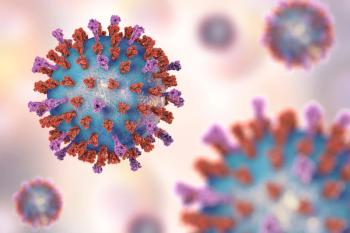
Expert: Tracking Insulin Biosimilar Activity May Shed Light on How Managed Care Stakeholders Approach Biosimilar Formulary Decisions
Sonia Oskouei, PharmD, vice president of biosimilars at Cardinal Health, discusses what biosimilars in the pipeline are expected to launch this year.
Pharmacy Times interviewed Sonia Oskouei, PharmD, vice president of biosimilars at Cardinal Health, on the data presented in Cardinal Health’s 2022 Biosimilars Report, which predicts 2022 will be a turning point in the adoption of biosimilars in the United States.
Alana Hippensteele: Hi, I’m Alana Hippensteele with Pharmacy Times. Joining me is Sonia Oskouei, PharmD, vice president of biosimilars at Cardinal Health, who is here to discuss a
What biosimilars are in the pipeline that are expected to launch this year?
Sonia Oskouei: So yes, so we expect our first ophthalmology biosimilar to be launched this year, but we also are expecting additional ophthalmology biosimilars, particularly for ranibizumab biosimilar to also get approval and potentially launch in [quarter 2], so you could see multiple agents coming out in the ophthalmology space for that product.
There's also potential for a short-acting insulin biosimilar to be approved, and then additional oncology biosimilars for products that already have biosimilar competition are still lined up to get approvals and come to market and this could include products for filgrastim, pegfilgrastim, [and] bevacizumab. So you're going to see an even more crowded market for some of these oncology agents that already have competition.
I'm always careful to say ‘potentially’ because as we’ve seen in the past year with the impact of COVID-19 [that there have been] delays with some decision making or site inspections—that's always up in the air. But hopefully, this year will prove to be much better on all fronts, [with the] pandemic and FDA activity, so these products come to market.
Alana Hippensteele: How about what's in the pipeline for a launch date between 2023 and 2029?
Sonia Oskouei: There's a very robust pipeline when we look at this decade of biosimilar activity. Just to name a few, of course, we know 2023 is the year everybody has their eyes on with what I would consider one of the biggest pharmaceutical events in history with the biosimilars for adalimumab. But then, between this timeframe, you have a lot of, I will say, rheumatology and immunology products in different therapeutic areas. So products like [tocilizumab (Actemra)], [
So this is expanding, again, to broader patient populations, hopefully bringing the promise of biosimilars and lower cost alternatives to patients’ lives. If we look at the market sizes, $72.3 billion in reference product sales is expected to face biosimilar competition within the next 5 years. So really big opportunities around these products.
Alana Hippensteele: What are some biosimilar predictions outlined in the report for 2022?
Sonia Oskouei: So we talk about some activity that we're very excited to continue to monitor and stay close with, and that, for one, is the
Secondly, I think we're going to see a lot of activity continue from originator manufacturers or innovators as they prepare for more biosimilar competition. So looking at ways that they could further protect market share, or further innovate and bring additional products to market that may help compete against some of these biosimilars.
Then the third main point I'll highlight is really that there's going to be an increasing focus on establishing and developing real world evidence and data to further create clinical confidence with these products, as we've noted in the report were some hesitancies around efficacy, for example, with biosimilars—this is going to be very important moving forward.
Alana Hippensteele: Right, absolutely. What are the implications of this shift in the biosimilar market for broader health care systems?
Sonia Oskouei: I think at the end of the day, the promise of biosimilars is to bring competition, lower costs, and enhance patient accessibility and affordability of these critical treatments. So, if we look at the implications of this shift, what we're doing is expanding additional therapeutic areas, having these products available and additional sites of care under expanded reimbursement models—all these activities are important to furthering the promise of biosimilars in the market.
Furthermore, having these available to patients more broadly, what you're ultimately doing is opening the door and having the budget essentially to afford the next wave of innovation and treatments that could further extend patient lives and allow them to live healthier and happier lives at the end of the day, which is why these products ultimately came to market and are coming to market.
Newsletter
Stay informed on drug updates, treatment guidelines, and pharmacy practice trends—subscribe to Pharmacy Times for weekly clinical insights.




